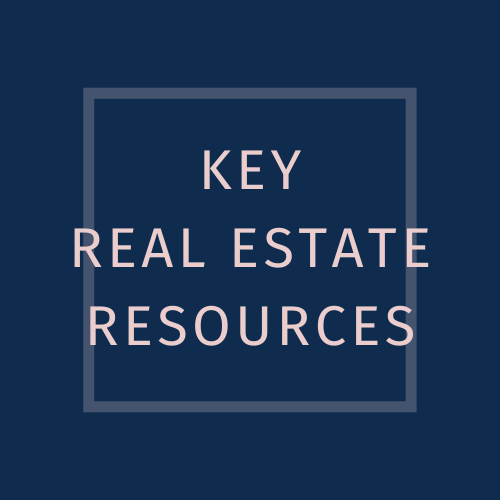Real Estate Agent’s Guide to Mortgage Financing
As the housing market heated up over the past few years, there has been a noticeable increase in the percentage of all-cash offers. The National Association of Realtors (NAR) reports a one-year rise from 16% to a peak of 25% in July 2021. Even with this new information, three-quarters of buyers are still reliant on mortgage loans in order to make their goals of homeownership a reality.
The majority of people who buy homes do so with the assistance of financing. As a real estate agent, you need to have a fundamental understanding of the world of mortgage lending so that you are in a position to guide your clients better.
Here’s a guide to mortgage financing for real estate agents:
How Does Mortgage Financing Work?
1. Pre-approval process
Before your clients start house hunting, it’s important for them to get pre-approved for a mortgage. This will give them a better idea of how much they can afford to spend on a home and can make the home-buying process smoother.
2. House hunting
Once pre-approved, the borrower can start house hunting. They usually work with a real estate agent, such as yourself, to find properties that fit their needs and budget.
3. Making an offer
Once the borrower has found a property they would like to purchase, they can make an offer. If the offer is accepted, the next step is to apply for a mortgage.
4. Loan application
The borrower will need to complete a loan application, providing additional financial information and documentation, such as tax returns and pay stubs. The lender will also order an appraisal of the property to determine its value.
5. Underwriting
The lender will review the loan application, financial information, and property appraisal to determine whether to approve the loan. This process is known as underwriting.
6. Loan approval and closing
If the loan is approved, the next step is to close the loan. The borrower will need to sign a number of documents, including a mortgage agreement, to finalize the loan. At closing, the borrower will pay closing costs and the down payment, if applicable.
7. Loan servicing
After closing, the lender will service the loan, collecting payments and managing the loan account. The borrower will make monthly mortgage payments to the lender until the loan is paid in full.
This is a basic overview of the mortgage process. Keep in mind that the exact steps and timeline can vary depending on the lender, type of loan, and state laws for real estate agents.
Underwriting and loan qualification
Underwriting is the process by which a lender evaluates a loan application to determine whether to approve the loan and, if so, on what terms. The purpose of underwriting is to assess the risk of lending money to a borrower and to ensure that the loan meets the lender’s guidelines.
Loan qualification is the process of determining whether a borrower is eligible for a loan based on their financial information and credit history. The qualification criteria differ based on the type of loan the buyer is applying for. Generally, it is easier to qualify for a hard money loan as compared to a conventional loan from a bank or credit union. The lender will evaluate several factors to determine the borrower’s loan qualifications, including:
- Credit score: The borrower’s credit score is an important factor in loan qualification. It provides a snapshot of their credit history and their ability to repay debt. Generally, a higher credit score indicates a lower risk to the lender.
- Income: The lender will review the borrower’s income to ensure that they have the ability to repay the loan. This may include reviewing tax returns, pay stubs, and other documentation.
- Employment: The lender will also consider the borrower’s employment status, length of time at their current job, and overall stability of their income.
- Debt-to-income ratio: The debt-to-income (DTI) ratio is the amount of debt a borrower has relative to their income. A high DTI ratio may indicate that the borrower has difficulty repaying debt, which could affect their loan qualifications.
- Assets: The lender will review the borrower’s assets, such as savings accounts and investments, to determine their ability to repay the loan in the event of financial hardship.
- Collateral: In the case of hard money loans, the lender will also consider the property being purchased as collateral for the loan. An appraisal of the property will be conducted to determine its value and marketability.
Once the lender has evaluated these and other factors, they will determine the borrower’s loan qualifications and decide whether to approve the loan. If the loan is approved, the lender will also determine the loan terms, such as the interest rate and repayment period.
Types of mortgage
There are several types of mortgages available to homebuyers, each with its own unique features and requirements. Here is a brief explanation of some of the most common types of mortgages:
- Conventional mortgage: A conventional mortgage is a loan that is not insured by the government. It is typically offered by a private lender and is a popular option for homebuyers who have good credit and a large down payment.
- FHA mortgage: An FHA (Federal Housing Administration) mortgage is a government-insured loan that is designed to help first-time homebuyers or those with low to moderate income and credit scores. FHA mortgages typically require a lower down payment and are more lenient when it comes to credit score requirements.
- VA mortgage: A VA (Department of Veterans Affairs) mortgage is a loan that is guaranteed by the VA and is available to eligible military veterans and their families. VA mortgages often offer competitive interest rates, no down payment requirement, and no private mortgage insurance (PMI) requirement.
- USDA mortgage: A USDA (United States Department of Agriculture) mortgage is a government-insured loan that is designed to help low- and moderate-income homebuyers in rural areas. USDA mortgages often require no down payment and offer competitive interest rates.
- Adjustable-rate mortgage (ARM): An adjustable-rate mortgage (ARM) is a type of home loan in which the interest rate changes over time. The interest rate is initially set at a lower rate than a fixed-rate mortgage but can increase or decrease over time based on changes in market interest rates.
- Fixed-rate mortgage: A fixed-rate mortgage is a type of mortgage in which the interest rate remains the same for the entire term of the loan. Fixed-rate mortgages are a popular option for homebuyers because they provide stability and predictability in monthly mortgage payments.
A mortgage professional or financial advisor can help your clients understand the options and make an informed decision.
Mortgage regulations and industry changes
The mortgage industry is subject to a wide range of regulations and standards that are designed to protect consumers and ensure the stability of the financial system. Some of the key regulations and industry changes include:
- The Dodd-Frank Wall Street Reform and Consumer Protection Act: This act, passed in 2010, aimed to increase transparency and accountability in the financial industry and to prevent another financial crisis like the one that occurred in 2008. The act established new regulations for the mortgage industry, including new requirements for lenders and increased oversight of mortgage servicing practices.
- Qualified Mortgage (QM) rules: The QM rules, which went into effect in 2014, establish standards for the underwriting of mortgages. The rules require lenders to consider a borrower’s ability to repay the loan and to ensure that loans meet certain standards for risk and stability.
- The Home Mortgage Disclosure Act (HMDA): The HMDA requires lenders to collect and report data about the characteristics of their mortgage lending, including the race, ethnicity, and income of borrowers. The data is used to identify patterns of discrimination and to enforce fair lending practices.
- The Consumer Financial Protection Bureau (CFPB): The CFPB is a government agency that is responsible for regulating the mortgage industry and protecting consumers from unfair, deceptive, or abusive practices. The CFPB has the authority to write and enforce regulations, supervise lenders and servicers, and take enforcement action against those who violate consumer protection laws.
- Technology advancements: The mortgage industry is also experiencing significant changes due to advances in technology. For example, online lending platforms and digital mortgages have made the mortgage process more efficient and accessible for borrowers.
These are just a few of the key regulations and changes affecting the mortgage industry. The industry is constantly evolving, so it’s important for industry participants to stay informed about the latest developments and comply with all applicable regulations.
Components of a Mortgage Loan
A mortgage loan typically consists of several different components, including:
- Principal: The principal is the amount of money being borrowed to purchase the property.
- Interest: Interest is the cost of borrowing money. It is expressed as a percentage of the loan amount.
- Escrow: Escrow is an account held by the lender to pay for property-related expenses such as property taxes and insurance.
- Taxes: Property taxes are usually included in the monthly mortgage payment and are paid into the escrow account until they are due.
- Insurance: Homeowner’s insurance is required by most lenders to protect the property from damage or loss. The cost of insurance is also typically included in the monthly mortgage payment and is paid into the escrow account.
- Private mortgage insurance (PMI): PMI is required if the loan-to-value (LTV) ratio exceeds 80%. PMI protects the lender in case the borrower defaults on the loan.
- Closing costs: Closing costs are fees charged by the lender and other parties for services related to the loan and the sale of the property. These costs may include appraisal fees, title search fees, and other charges.
By understanding these components, you can get a better sense of what to expect when taking out a mortgage loan, and how the loan will impact your finances over time.
The Bottom Line
By understanding the basics of mortgage financing, real estate agents can provide valuable guidance and support to clients throughout the home-buying process. By staying informed on the latest developments in the mortgage industry and working closely with mortgage lenders, an agent can help all your needs to find the financing option that is best suited for you.





